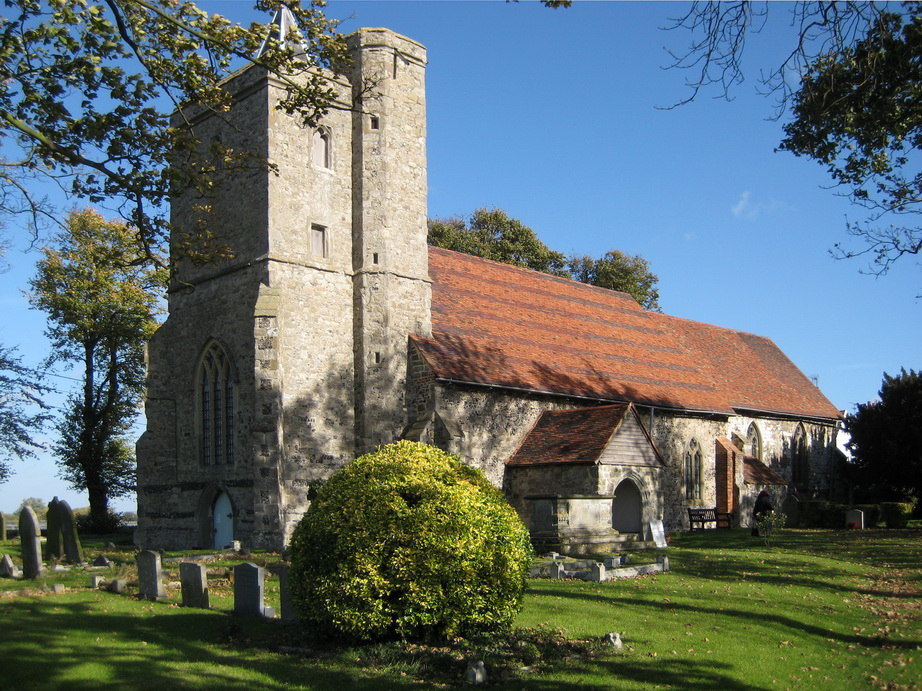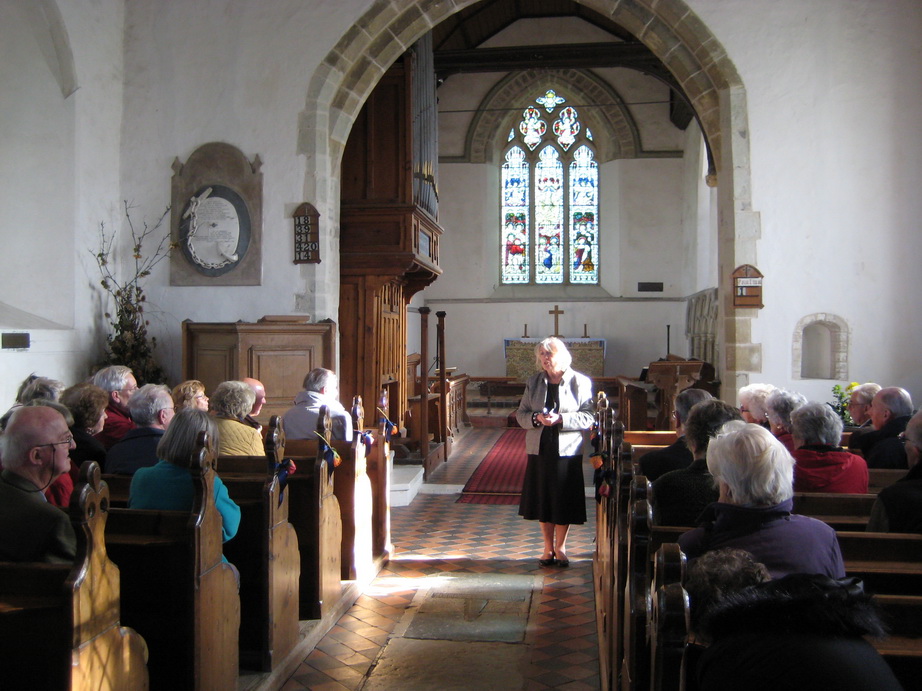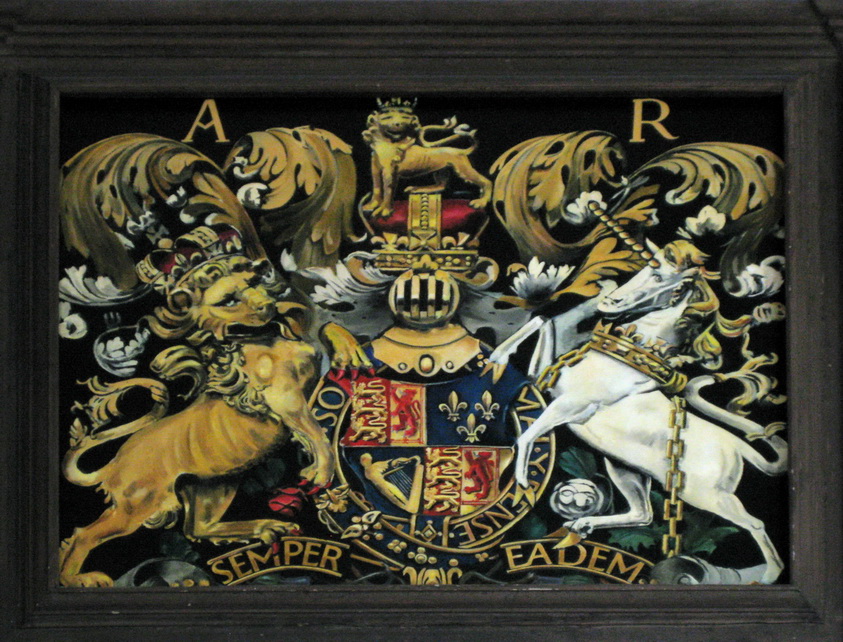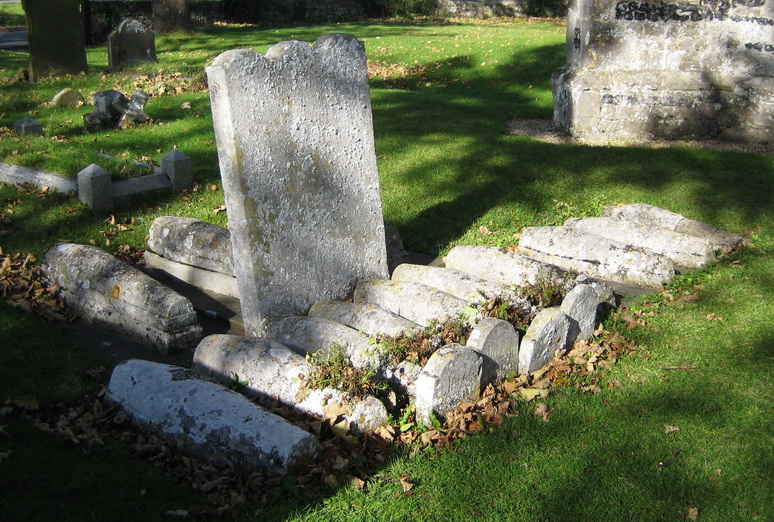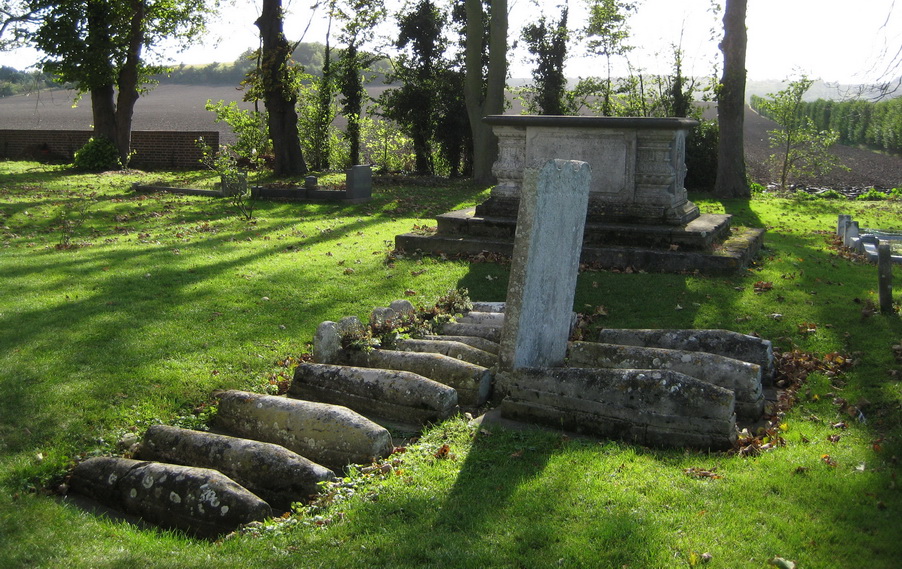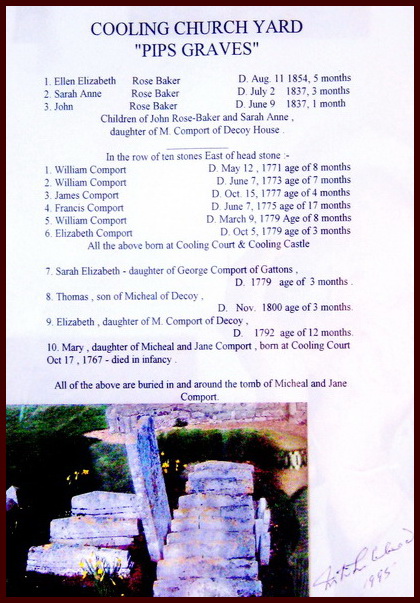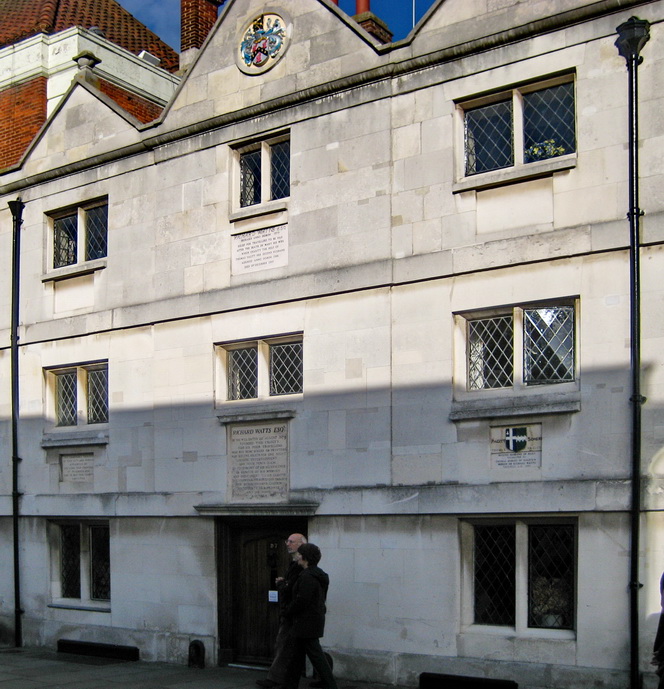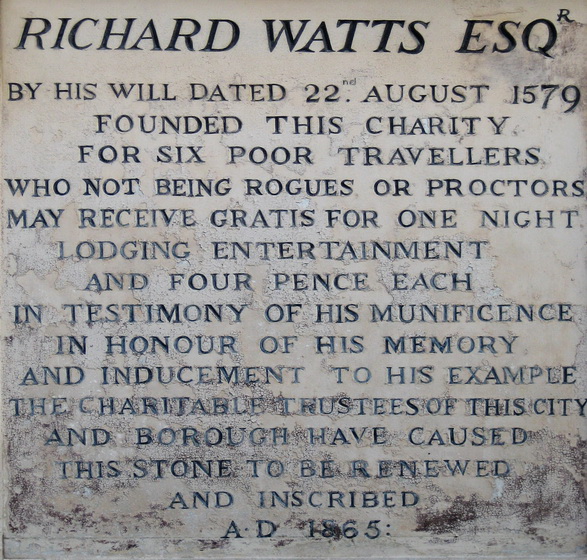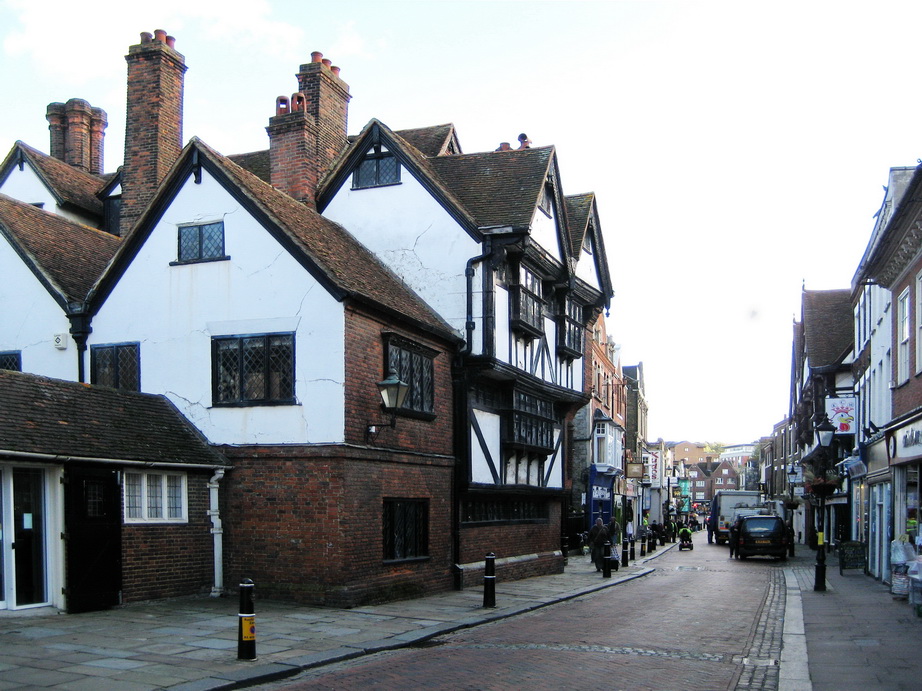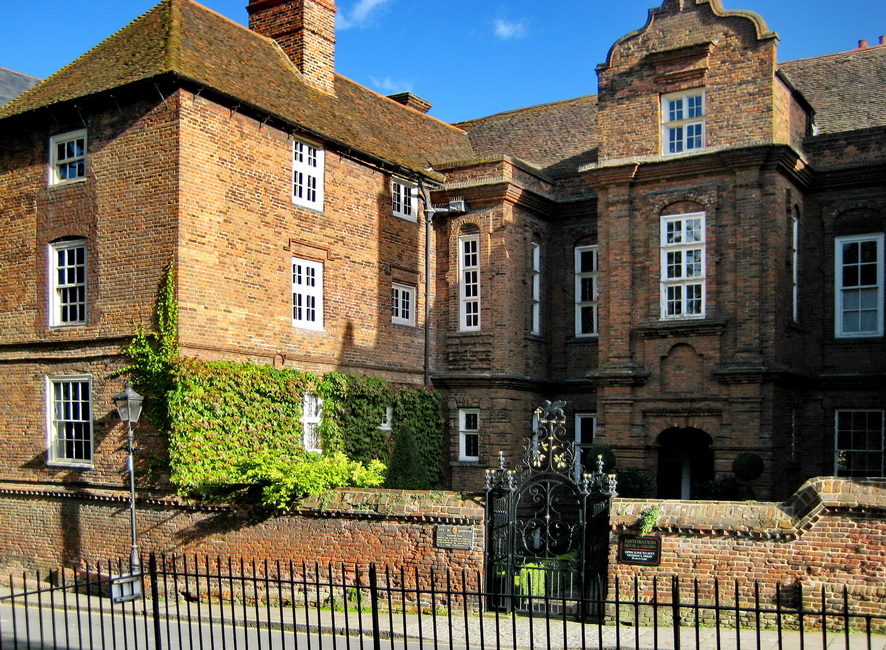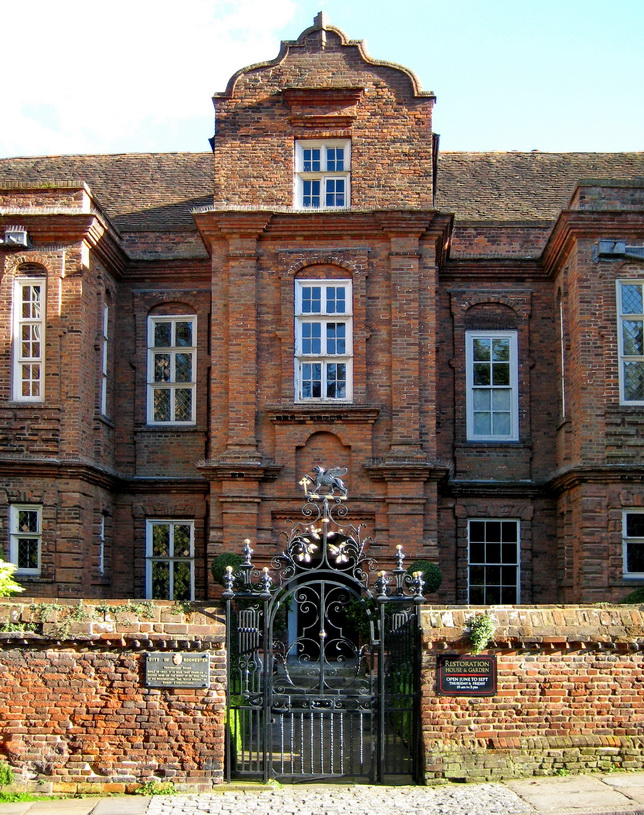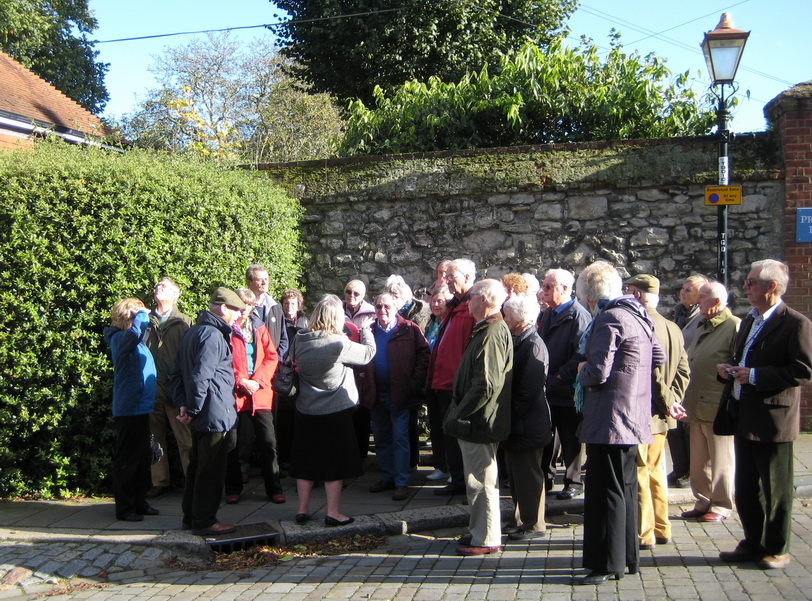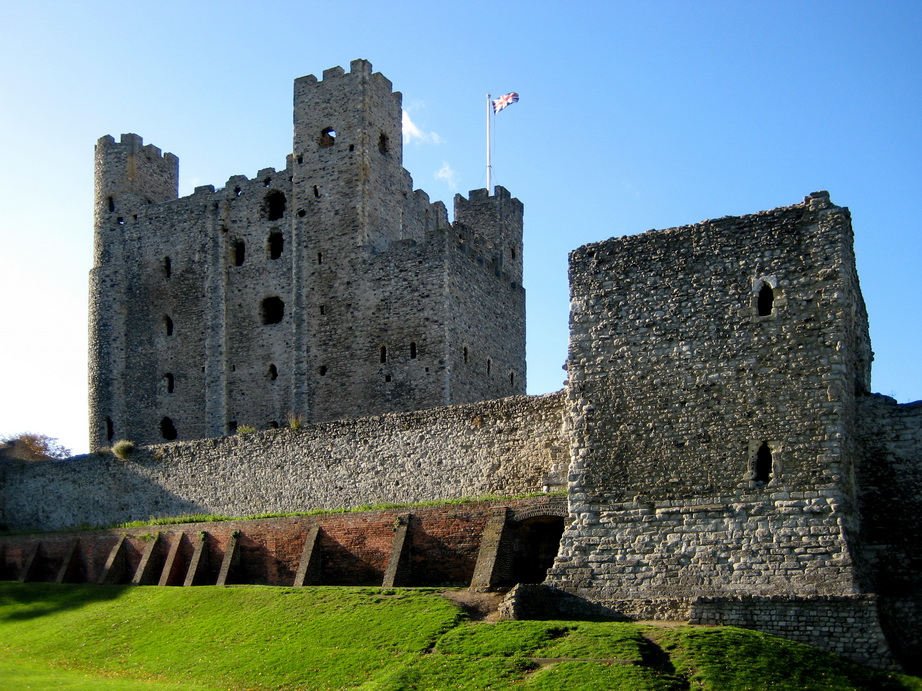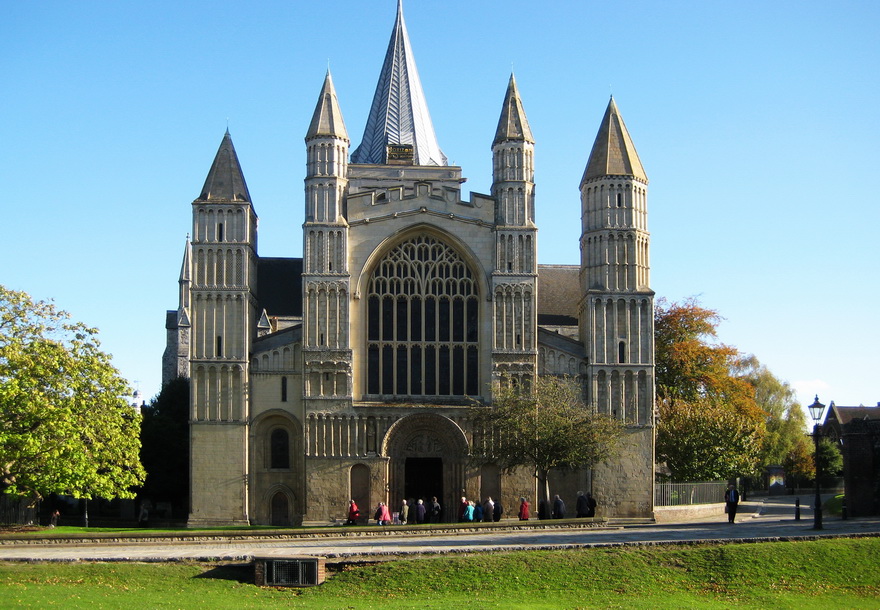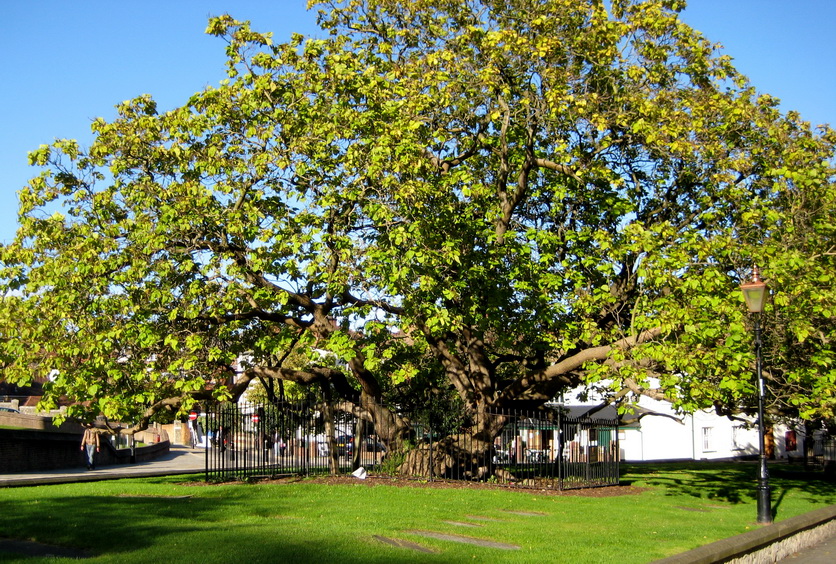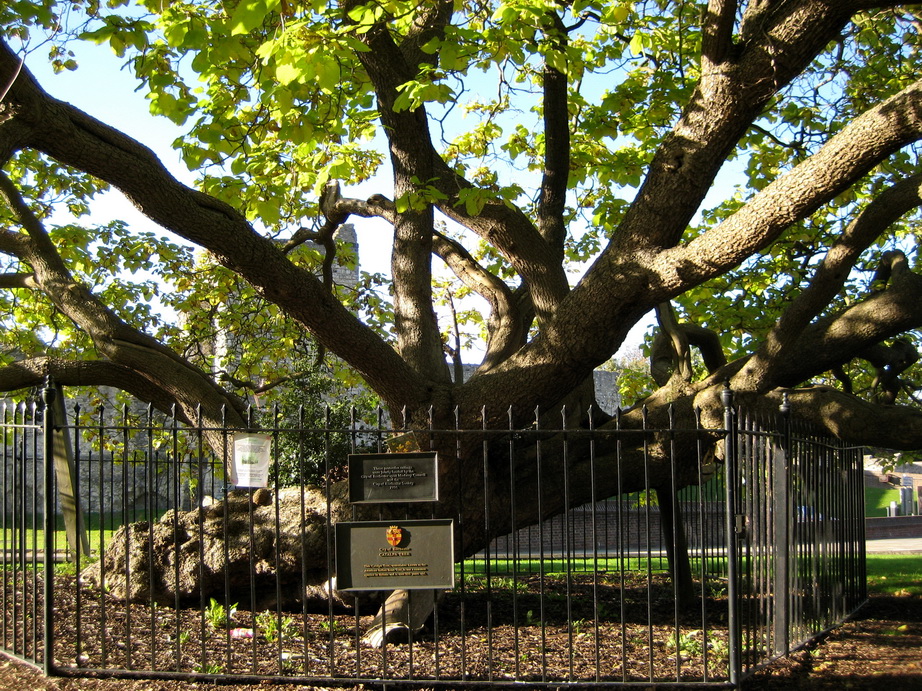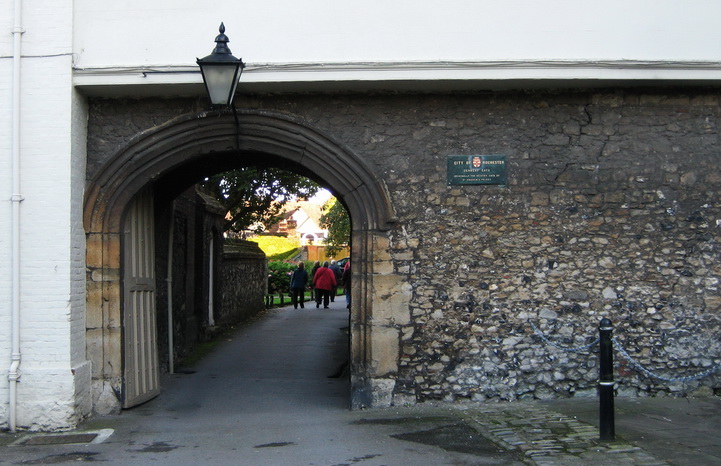A Medway Mosaic
16th October 2012
On another glorious autumn day, Probus members and guests headed for the historic Kentish town of Rochester, much loved by Charles Dickens, taking in the Hoo Peninsula between the rivers Medway and Thames and stopping off at the 'Great Expectations' Church at Cooling on the way. After lunch at the Sir John Falstaff inn, Higham, close to Dickens' House 'Gads Hill Place', we explored the Victorian High Street of Rochester, including the 'Six Poor Travellers House' and Charles II's 'Restoration House', ending up at Rochester Cathedral opposite the Castle where we found a welcoming tea room before heading for home.
St James Church, Cooling, no longer used for regular worship, but cared for by The Churches Conservation Trust.
Our guide, Carol, from City & Village Tours, describes the history of Cooling Church where Dickens set one of the world's most famous literary scenes - the meeting between Pip and the convict at the start of Great Expectations.
The Royal Arms of Queen Anne (1702-1714) painted by Gerald Fleuss.
This canvas was commissioned by The Churches Conservation Trust in 2004 to replace a Royal Arms of that period stolen from the church in the 1990s. The frame is the original.
The cockle shell vestry. This tiny room was decorated in unusual form in 1833 by two churchwardens, John Murton and John Comport.
Pip's Graves in Cooling Churchyard.
These are the memorials that Charles Dickens described in the opening scene of 'Great Expectations'. They belong to two local families and mark the resting places of 13 children who died between 1767 and 1854.
Pip's Graves in Cooling Churchyard.
Details of Pip's Graves displayed in the Church
The Sir John Falstaff Public House at Higham.
The name commemorates the incident in Shakespeare's Henry IV when Falstaff, the young Prince Hal and their roguish companions planned to hold up a group of travellers on Gads Hill.
Gads Hill Place, Higham, once the house of Charles Dickens.
The 'Six Poor Travellers House' on Rochester High Street.
The charity was founded in 1579 by Richard Watts for six poor travellers to receive free lodging for one night and four pence each.
Inscription on one of the stones in the wall of the 'Six Poor Travellers House'.
View along the old Victorian High Street in Rochester.
Restoration House in Rochester, built in the late 16th century and a fine example of an Elizabethan mansion.
A closer view of the entrance to Restoration House.
It is also the Satis House of Dickens' 'Great Expectations', the home of Miss Havisham.
Our guide, Carol (back to camera) answering questions before going to the Cathedral.
Heading towards the Cathedral.
Rochester Castle, strategically placed on the road to London and guarding an important crossing of the River Medway.
The Norman tower-keep built of Kentish ragstone was constructed about 1127 by William of Corbeil, Archbishop of Canterbury, with the encouragement of Henry I. Consisting of three floors above a basement, it still stands 113 feet high.
Our group arriving at Rochester Cathedral, England's second oldest cathedral, founded in 604AD by Bishop Justus.
The present building dates back to the work of the French monk, Gundulf, in 1080. Notable for the Norman architecture of the nave and parts of the crypt, it also has one of the finest Romanesque facades in England and some good examples of later Gothic styles.
The Catalpa Tree opposite the cathedral, otherwise known as the American Indian Bean Tree, is over100 years old and protected by the City of Rochester Society.
Protective railings around the Catalpa Tree, funded by Rochester upon Medway Council and the City of Rochester Society.
The Deanery Gate, also known as Sextry Gate or Sacristy Gate, was built between 1345 and 1377 and used to keep the Priory grounds private from pilgrims visiting the Cathedral.
A view of the nave and organ in Rochester Cathedral.

